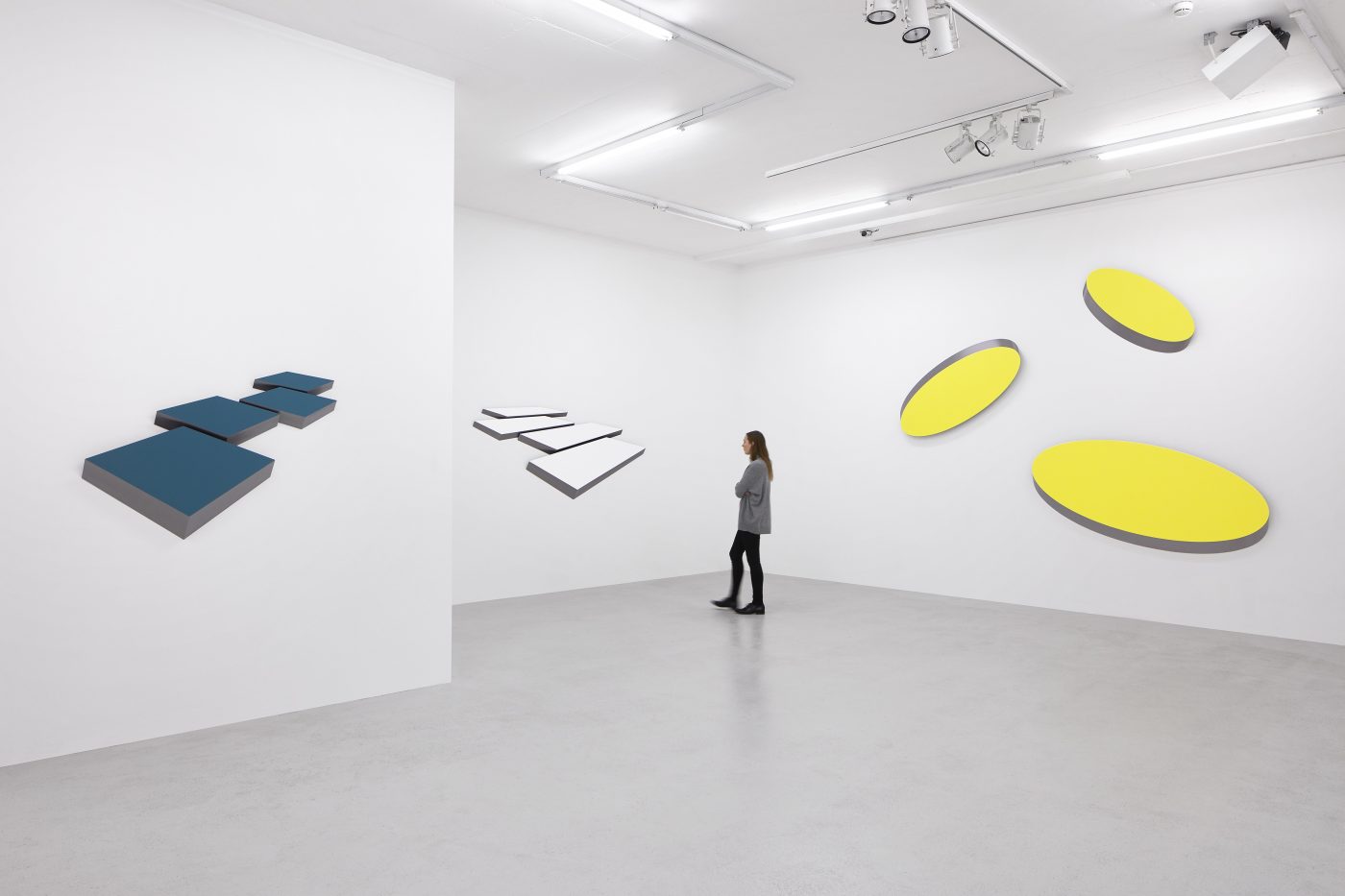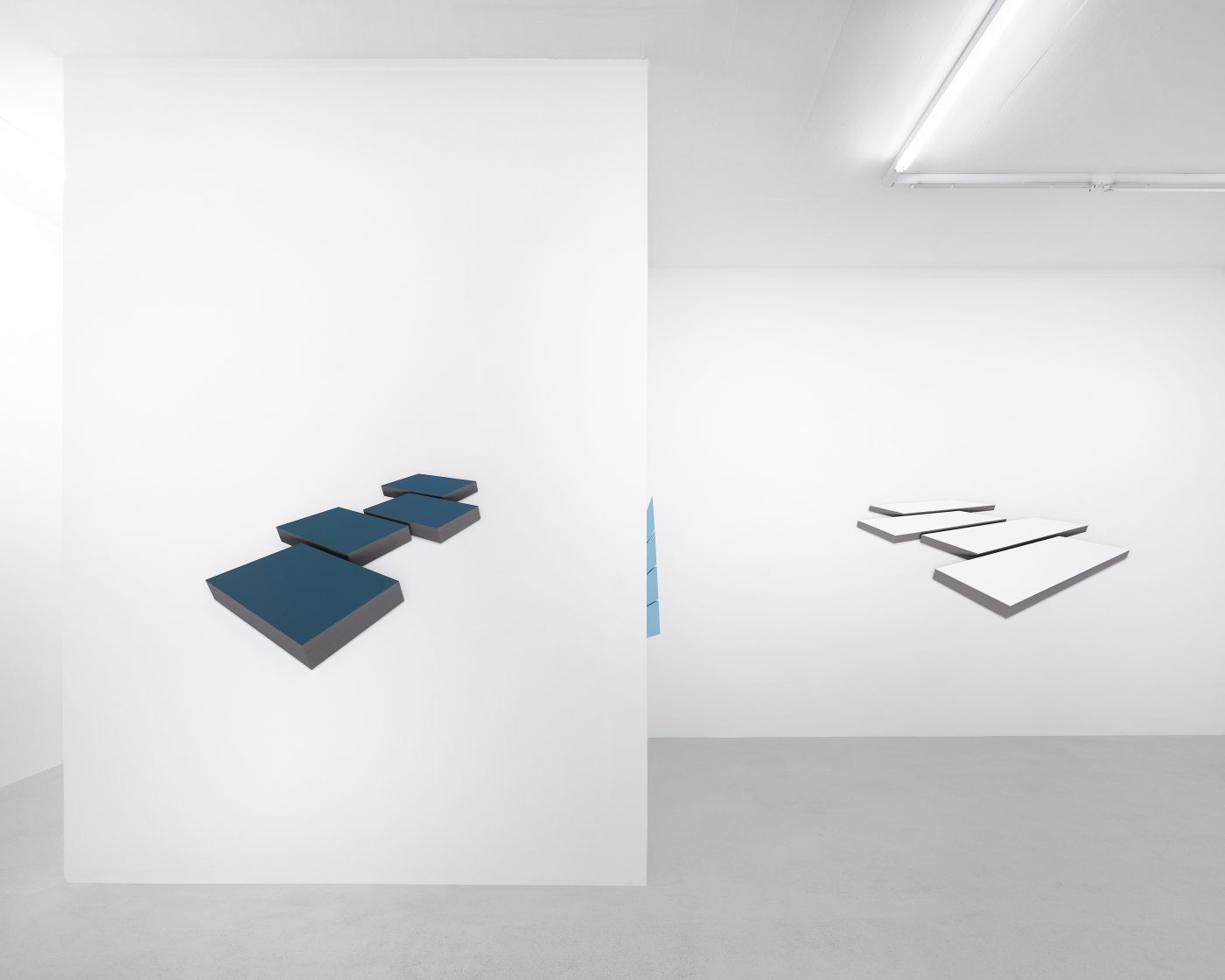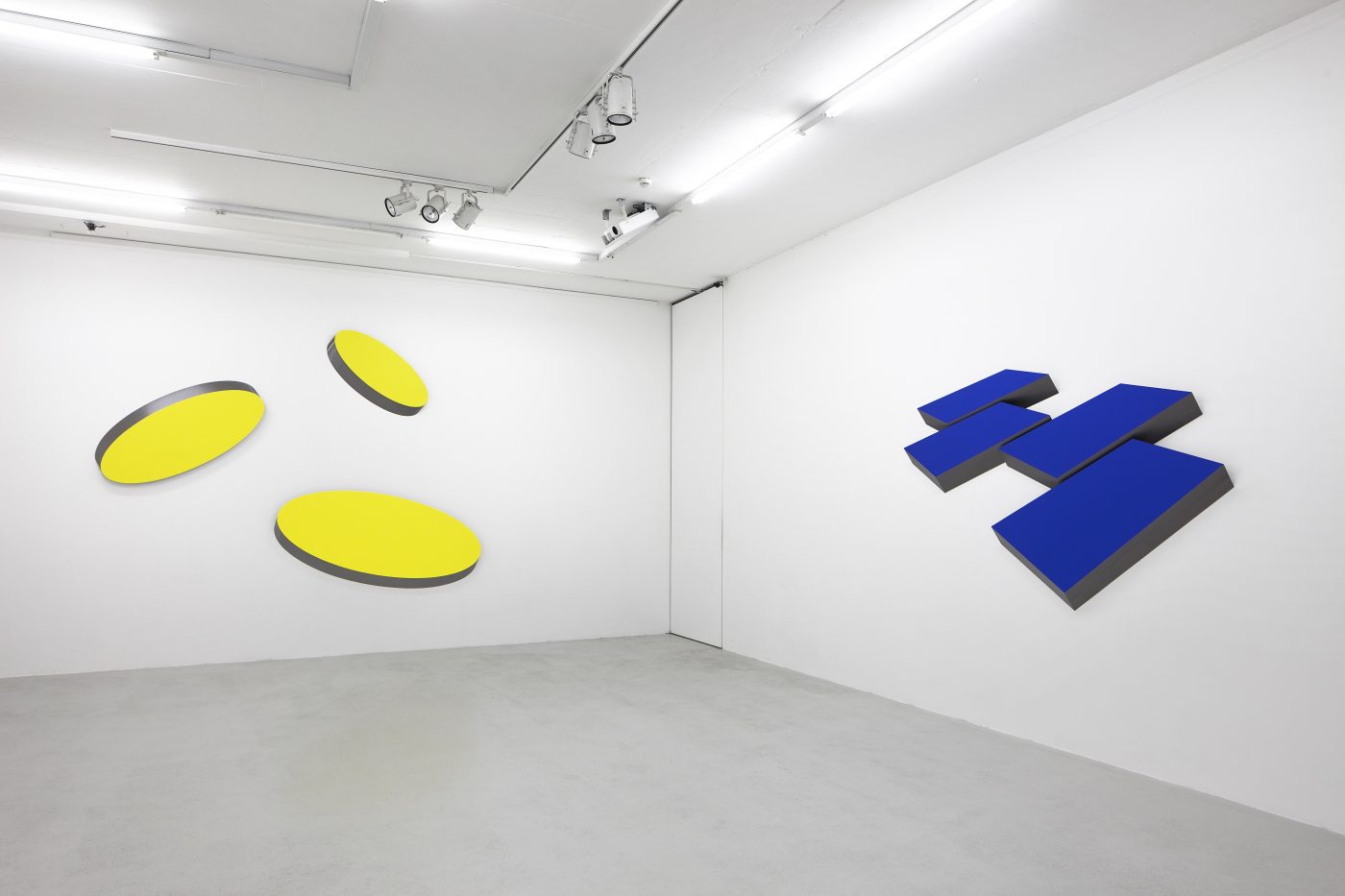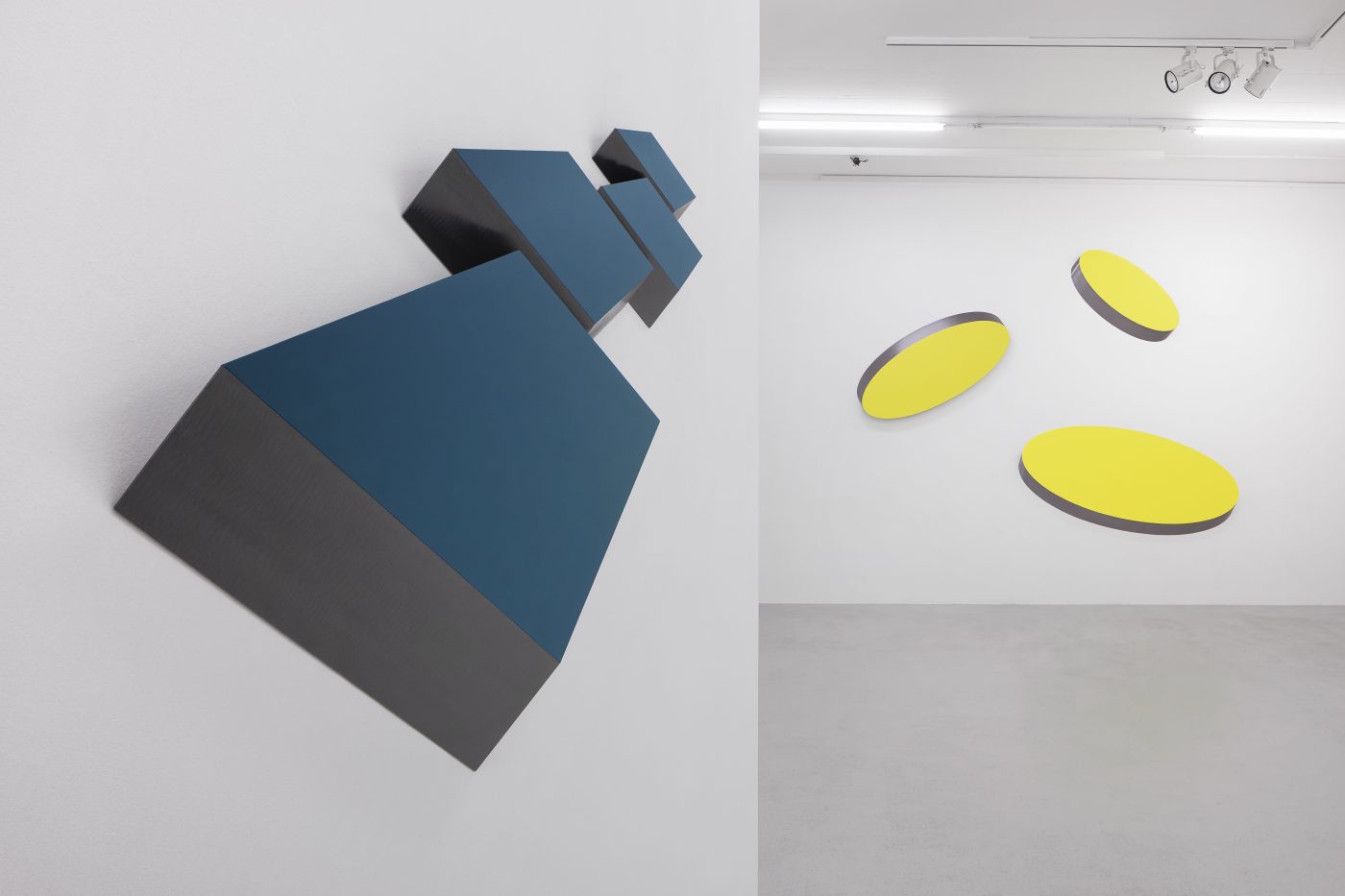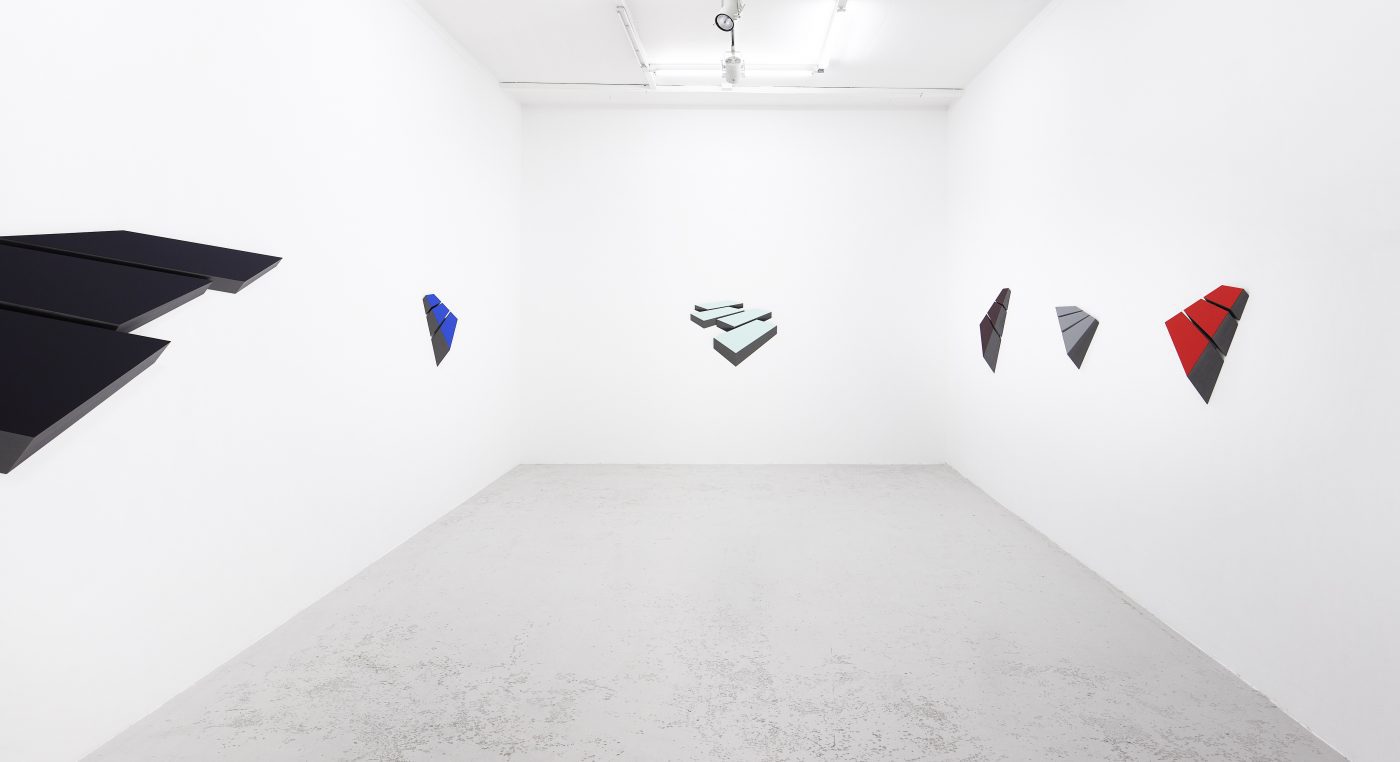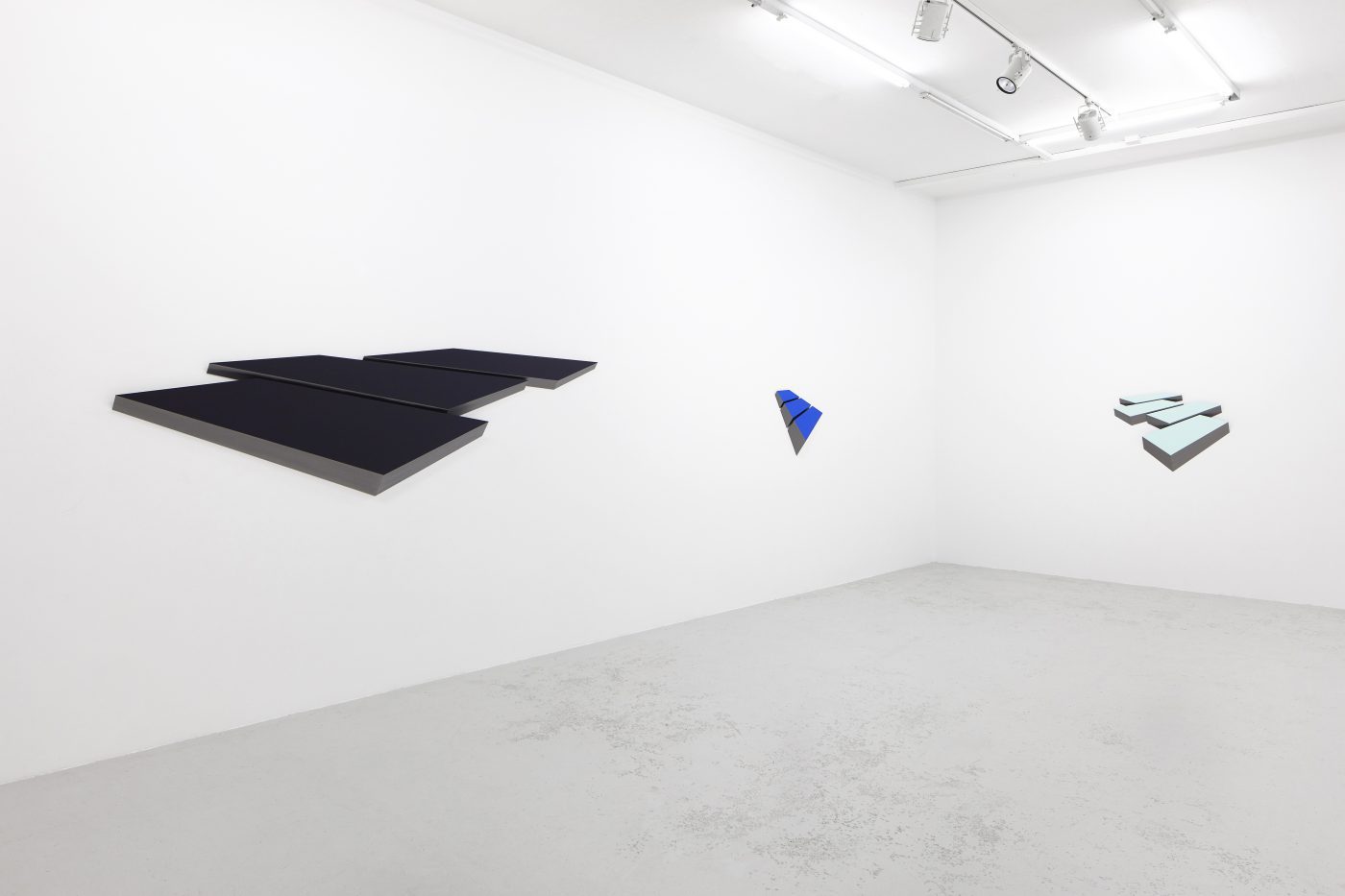Warning: Undefined variable $excerpt_more in
/home/clients/07184c837b9f6a35616293cfa15d6b85/sites/langepult.com/wp-content/themes/galerie_l+p_v1/functions.php on line
620
The galerie lange + pult is pleased to present the third solo exhibition by Wolfram Ullrich (*1961) in the Zurich gallery.
Known for his ingenious steel constructions, which turn the viewer’s viewing habits upside down through optical illusions, the latest monochrome works by the German artist in colourful arrangements once again reveal themselves in their three-dimensional execution as a testimony to the playful ambivalence between image and object, between surface binding and plastic autonomy. Influenced by the formal vocabulary of geometric-abstract art, whose origins can in turn be traced back to classical constructivism, the search is always for a new pictorial world that is its own subject and its own meaning, expressed as pure color, pure form. Thus, in the German artist’s work, abstract, hidden backgrounds and interlocked interiors, which unite surface and object in front of the wall to form a coherent organism. The linear system, which picks up and continues the coordinates of the space, suddenly grows into new dimensions.
In the first room of the exhibition, the viewer is struck by differently monochrome polygons as well as yellow and red ellipses floating in space, whereby one first believes that one is confronted with abstract images –
LOAD MORE +
The galerie lange + pult is pleased to present the third solo exhibition by Wolfram Ullrich (*1961) in the Zurich gallery.
Known for his ingenious steel constructions, which turn the viewer’s viewing habits upside down through optical illusions, the latest monochrome works by the German artist in colourful arrangements once again reveal themselves in their three-dimensional execution as a testimony to the playful ambivalence between image and object, between surface binding and plastic autonomy. Influenced by the formal vocabulary of geometric-abstract art, whose origins can in turn be traced back to classical constructivism, the search is always for a new pictorial world that is its own subject and its own meaning, expressed as pure color, pure form. Thus, in the German artist’s work, abstract, hidden backgrounds and interlocked interiors, which unite surface and object in front of the wall to form a coherent organism. The linear system, which picks up and continues the coordinates of the space, suddenly grows into new dimensions.
In the first room of the exhibition, the viewer is struck by differently monochrome polygons as well as yellow and red ellipses floating in space, whereby one first believes that one is confronted with abstract images – purely painterly statements. At first glance, these feather-light objects seem to float weightlessly in a virtual space, but on closer inspection they turn out to be heavy steel constructions hanging rigidly on the wall. Already the fictitious lightness of a real weighty material suggests that the recipient, like a trompe l’œil, falls prey to a cleverly generated deception of the senses. In order to get an idea of the power of the works, the viewer must go around the works – the steel reliefs cannot be grasped from a fixed point of view, but change their spatial effect with each step. The object deals with the wall surface surrounded by the individual parts of the work, drawing in the white space in between. The diverging voluminous expansions of the new works also permit a new relationship to the wall, whereby the play of the space in between and its shadows between the various geometric steel bodies is pointed out. An impressive, strongly spatial effect is particularly evident in the large steel reliefs NAGO and ORBIT SOLARIS. The objects shine in bright sun-yellow and blue tones and extend in gigantic size over the side walls of the first gallery room. The precise shapes of the steel surfaces taper off, tilt into the room, seem to say goodbye to weightlessness.
In the second exhibition space, the reliefs AMI and NURE continue to underline the new relationship to the wall, but now emphasize a new perspective program through their smaller neighbors NOR, CEI, TUR or VON. While the depth illusion in the eyes of the exhibition visitor moving around the works constantly changes and seems to continue in one direction or the other, the actual depth of the reliefs is only a few centimeters. With their differentiated forms, monochrome colours and perspective variations, the works set accents, enter into a dialogue with one another, accentuate the space and compose new coordinates that oscillate between the factually visible and the illusionistic. While the surfaces in the earlier works were parallel to the wall surface, as in the yellow ZOA, the German artist now creates new levels of play and tilts the imposing constructions in such a way that the volumes – whether ellipses or rectangular forms – all follow a new perspective order.
Michèle Meyer
